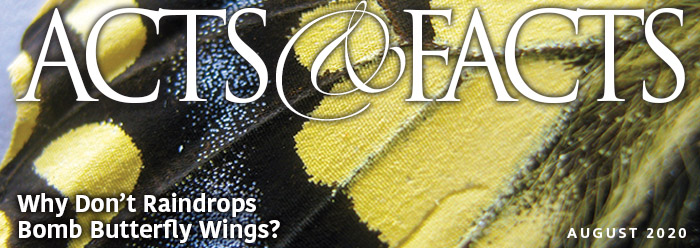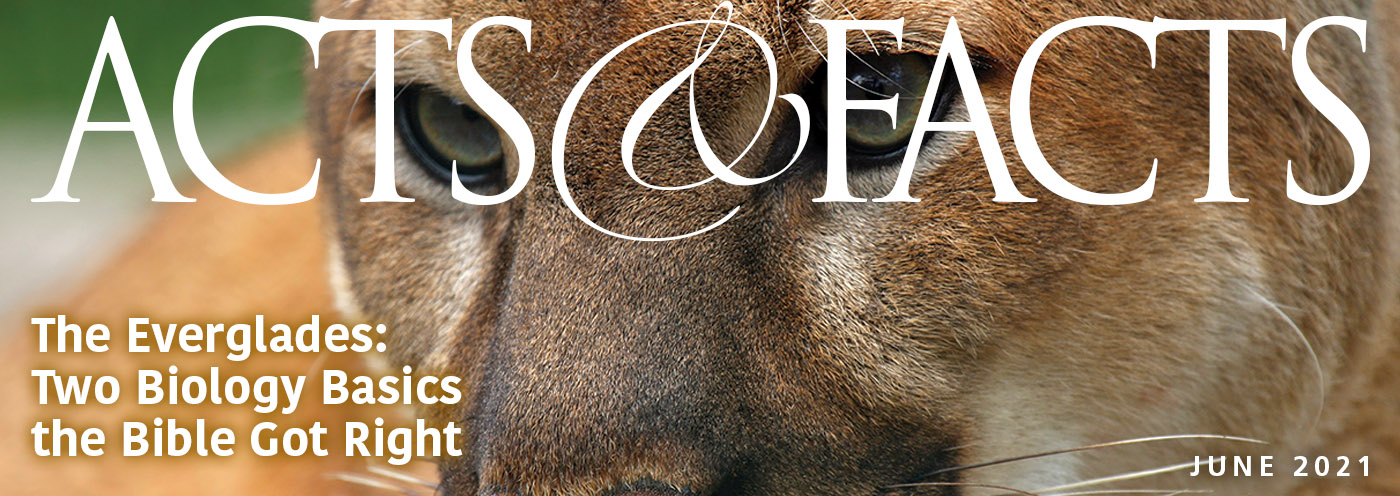The Crystal Cathedral's Once Upon All Time: Creation
By Bill Hoesch *
Many “Wows” could be overhead from people exiting the presentation of Once Upon All Time: Creation, which I saw recently at Crystal Cathedral. Indeed, the technical artistry was nothing less than breathtaking, with aerial acrobats, scented mists, and a larger-than-Imax screen, all fully integrated. However, there was disappointment also. For example, an Orthodox priest I met who brought his youth group from Los Angeles had expectations of the show being more faithful to Scripture than he found it. This seemed to summarize my experience. On the one hand, how gratifying to see such splendid artistry of an overall Christian theme, but on the other hand, I was grieved to see so many deviations from Scripture.
It was the goal of Carol Schuller Milner to reach an unchurched audience with the biblical themes of creation, the fall and, to a lesser degree, redemption, in a way that emphasized the mystery and grandeur of creation. What a wonderful goal! The biblical themes, however, are compromised by a story line that hems closely to the claims of naturalistic science, including allusions to big bang, macro-evolution, and vast pre-Adamic ages. These ideas that are hailed as “science” are, in fact, historical truth claims derived from a philosophy that forbids God from ever interfering with creation. Creation empties the Genesis account of most of its essential truth claims, injects it with naturalistic science, and then presents it as truth.
Creation opens with a scene of taking flight from the rigid confinement of city skyscrapers to the serenity of an idyllic lake, where we meet spiritual-minded Gramps and Michael, his science-minded grandson. The two are fishing from a boat as they discuss the natural beauty around them. Gramps rightly sees the importance of the origins issue and launches into a creation story that becomes the main substance of the production. As he does this, the audience feels as if they are catapulted into the very origin of the universe. The individual scenes that follow correspond roughly to the biblical six days of creation.
The “beginning” opens with a Day One scene called, “the womb of dreams,” depicting early stages of the big bang in which the universe is said to have been “birthed” from a pre-universal womb. The Presence, meant to signify the Creator, is not assigned a gender, but communicates via a female vocalist and a mixed male and female chorus. This is disturbing.
Earth does not appear in the Day One scene apparently because the big bang forbids it. In the next scene, representing Day Two, the audience is greeted with angelic “star archers” who create galaxies, stars, and planets, but still, no earth. The separation of waters, which is the main event of Day Two according to the Bible, is not evident. Earth finally appears in the next scene, which corresponds to Day Three, not as a planet covered with water as the Bible describes, but as a hot molten blob. This is soon transformed into a watery planet, a process that presumably took vast ages. “Primitive” plants appear.
Day Four of Creation begins not with the creation of sun, moon, and stars, which is described in Scripture as “good,” but rather with the ruinous fall of Lucifer and his angels, which was anything but good! The next scene, Day Five, marks the delightful appearance of swimming and flying creatures, which include predatory forms. This gives way to the Day Six scene, which opens with a terrifying array of dinosaurs. Other life forms, including the tortoise, eventually emerge from the fallen carcass of a T. rex, in what most will see as a not-so-subtle allusion to macro-evolution.
Here the audience is persuaded to think of animal mortality, including predation and bloodshed, as “good.” The next scene depicts the creation of Adam, whose lifeless form is awakened by the unmistakably female voice of The Presence. Next Eve “emerges from heaven’s womb.” Despite the beauty of this scene, by giving to Eve an origin that is independent from Adam, the “bone of my bone, flesh of my flesh” picture of marriage is gone. The six days of creation end on this tranquil note, suggestive of being “very good,” despite the presence of predation, animal death, and fallen angels.
The second act, a depiction of the fall of man and promise of redemption, opens with Lucifer as “Lord of the Earth.” The character of Lucifer is given the best development, and is splendid. One notes that Lucifer and his host are entirely male in gender, in contrast to the Presence, who seems androgynous, if not female. The story returns to the tranquility of Eden where Eve delivers a beautiful song of devotion to The Presence. The following scenes entitled “Seduction,” “Innocence Lost,” “Grief,” and “Wandering,” are powerfully presented in what is the high point of the show.
Fallen humanity, now plunged into despair by the fall, cries out to heaven. In response, “angelic promises” fall from heaven, as the audience is showered with “tears of gold.” Reading between the lines, this signifies the promise of a future redemption and restoration.
Creation ends with Gramps and Michael back in their fishing boat. Having been humbled by the sheer magnitude of the creation story, they find that faith and science are nearly in agreement. An outwardly happy ending is reached when Michael admits that Gramps’s vague and personalized faith is nearly sufficient to overcome his doubts springing from naturalistic science. To some of us, this is no resolution at all.
Overall, Creation succeeds in giving a sense of progression from a “beginning” that includes specific creative events, through a historical fall that has left man in a state of alienation, to the promise of a future restoration. These things are good and commendable. However, there is also a blurring of distinctions, between natural causation and supernatural, between male and female, between “good” and non-good, and between dream and reality. In this sense, Creation is more in agreement with Monism than with Christianity.
Despite the sincere motivations of writer Carol Schuller Milner and science consultant Michael Guillen, I am not convinced that the net effect is a good one.
* Bill Hoesch works as a research assistant in geology at the Institute for Creation Research and holds a M.S. in geology. The institute also operates the Museum of Creation and Earth History, which presents the compatibility of a high view of Scripture with a high view of science.
















